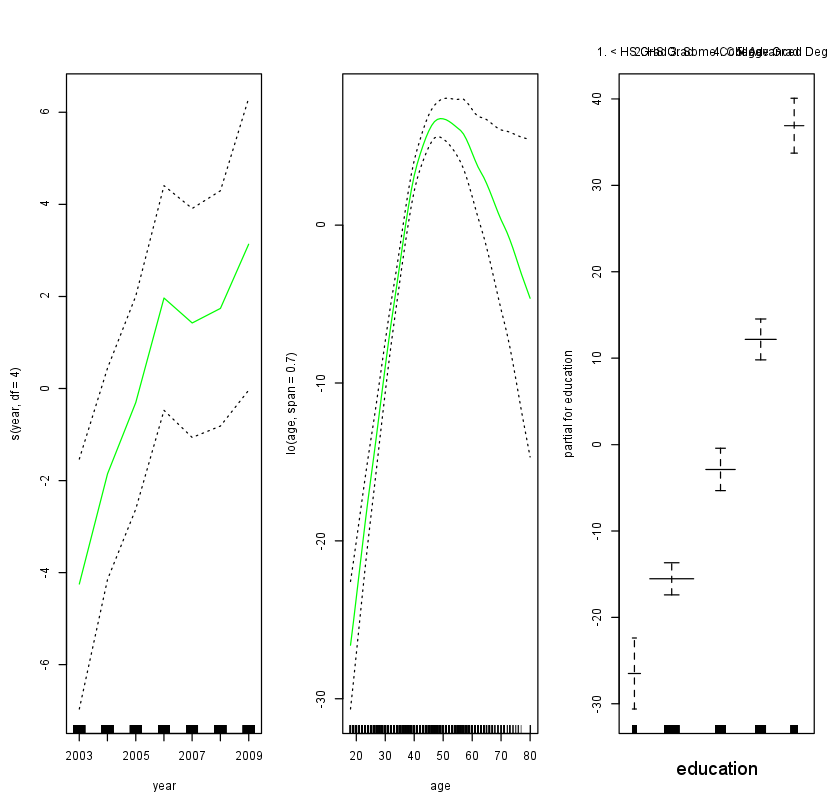We can also use local regression fits as building blocks in a GAM, using
the lo() function.
gam.lo <- gam(wage ~ s(year, df = 4) + lo(age, span = 0.7) + education, data = Wage)
plot.Gam(gam.lo, se = TRUE, col = "green")

Here we have used local regression for the age term, with a span of 0.7.
We can also use the lo() function to create interactions before calling the
gam() function. For example,
gam.lo.i <- gam(wage ~ lo(year, age, span = 0.5) + education, data = Wage)
fits a two-term model, in which the first term is an interaction between
year and age, fit by a local regression surface.
We can make predictions from gam objects, just like from lm objects,
using the predict() method for the class gam. Here we make predictions on
the training set.
preds <- predict(gam.m2, newdata = Wage)
Questions
- Fit a GAM on the Boston dataset to predict
medvwith a local regression for thelstatterm, with a span of 0.5. Also add a degree-3 smoothing spline function ofrm. Store the result in the variablegam1. - Calculate predictions for
medvon the training set. Store the results in the variablepreds.
Assume that:
- The MASS library has been loaded
- The Boston dataset has been loaded and attached
(ignore: test Dodona)